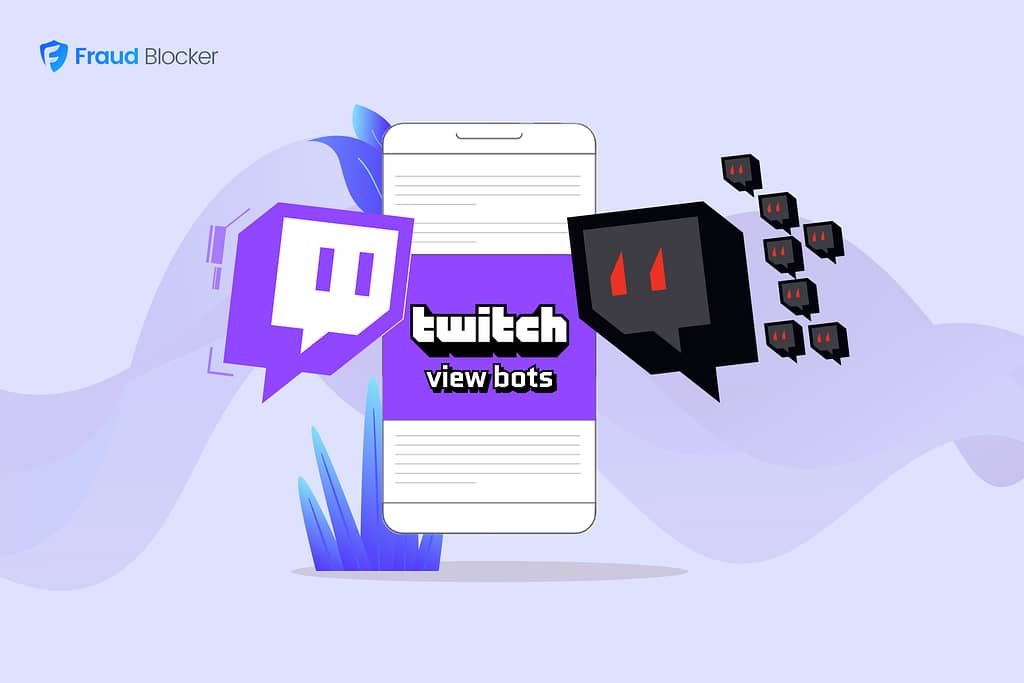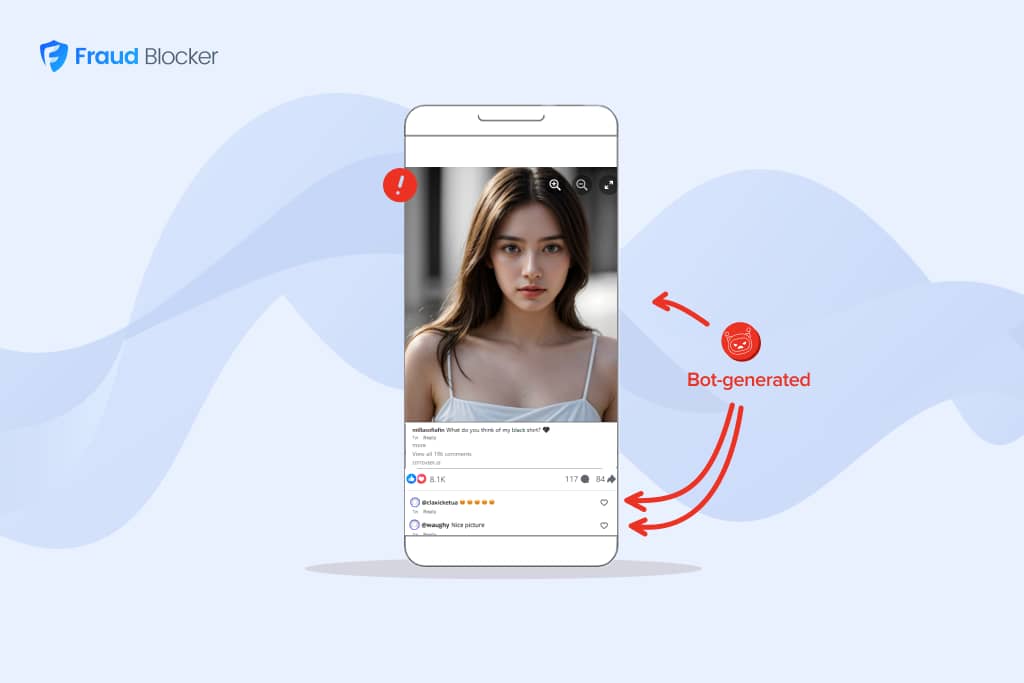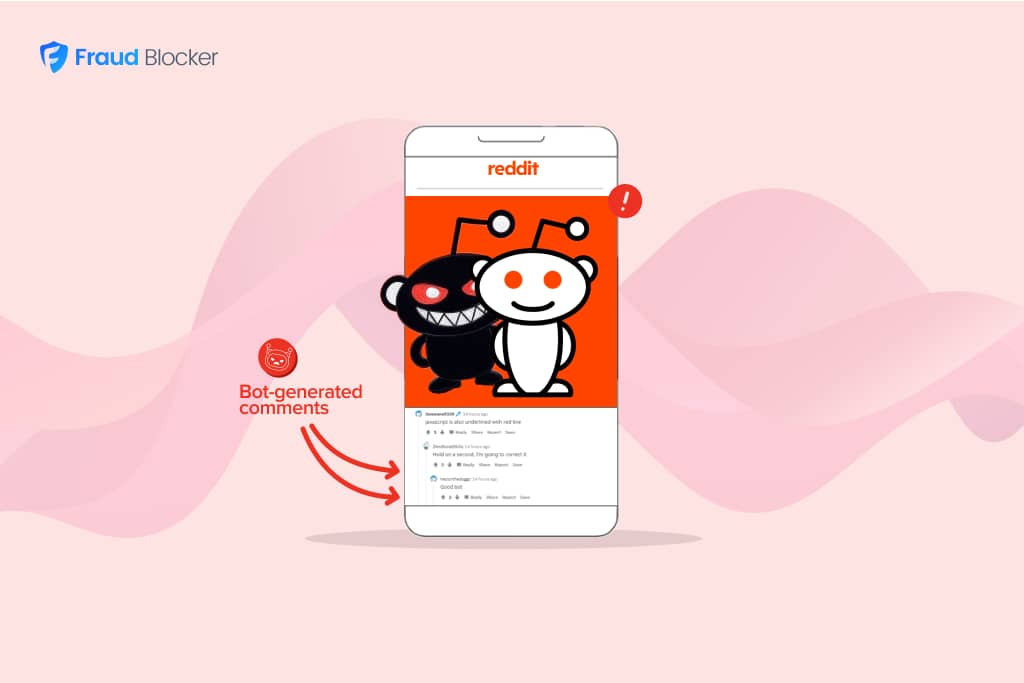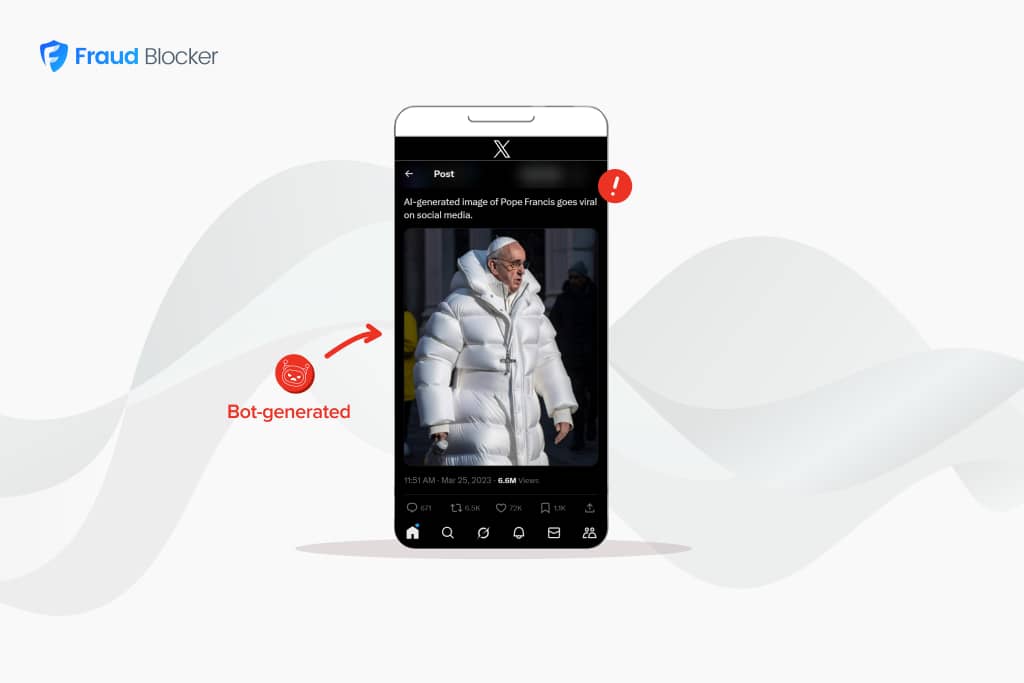
NEW New feature: Verify & block fake emails

We improve your ad performance by blocking click fraud and fake emails

Click fraud is costing advertisers billions in loses. Learn more here.

Click fraud is costing advertisers billions in loses. Learn more here.

In Q1 2024, Facebook (Meta) reported 3.07 billion monthly active users across the globe.
However, Facebook also shared that 827 million accounts are fake – or bots – representing 4-5% of its active users, but the true numbers are likely much higher with the recent wave of AI tools now available. These automated entities can interfere with genuine engagement, distort performance metrics, harm advertisers and degrade the overall user experience.
Learn how to identify spam bots on Facebook and how to prevent them in our own social efforts.
A Facebook spam bot is an automated account programmed to simulate likes, follows, comments, and posts. These bots operate without human input, driven by scripts tailored to execute specific actions. Their goals vary, from artificially boosting engagement statistics to promoting products or services. Despite their intentions, these bots often diminish the quality of user experience on the platform.
Facebook publicly reports the number of fake accounts created on their platform in their “Transparency Reports.” These are reported quarterly.
In their most recent report (Q3 2023), they reported 827 million accounts were fake and removed (see chart below). This represents 4-5% of all it’s active users, and is likely increasing with the use of AI tools.
You can view the latest data in Facebook’s Transparency Report on Fake Accounts.
Total number of fake accounts removed on Facebook (updated Sept. 2025)
Number of fake accounts on Facebook:
| Date | Amount |
| 2025 – Q2 | 687,000,000 |
| 2025 – Q1 | 100,000,000 |
| 2024 – Q4 | 1,400,000,000 |
| 2024 – Q3 | 1,100,000,000 |
| 2024 – Q2 | 1,200,000,000 |
| 2024 – Q1 | 631,000,000 |
| 2023 – Q4 | 691,000,000 |
| 2023 – Q3 | 827,000,000 |
| 2023 – Q2 | 676,000,000 |
| 2023 – Q1 | 426,000,000 |
| 2022 – Q4 | 1,300,000,000 |
| 2022 – Q3 | 1,500,000,000 |
| 2022 – Q2 | 1,400,000,000 |
| 2022 – Q1 | 1,600,000,000 |
| 2021 – Q4 | 1,700,000,000 |
| 2021 – Q3 | 1,800,000,000 |
| 2021 – Q2 | 1,700,000,000 |
| 2021 – Q1 | 1,300,000,000 |
| 2020 – Q4 | 1,300,000,000 |
| 2020 – Q3 | 1,300,000,000 |
| 2020 – Q2 | 1,500,000,000 |
| 2020 – Q1 | 1,700,000,000 |
Today’s bots are powered by AI, making them extremely life-like and difficult to detect. They can mimic real user interactions, which can mislead audiences and undermine the authenticity Facebook claims to uphold.
With the rise of AI-driven image generators such as Midjourney and chat bots powered by ChatGPT, bots can be programmed to generate social profiles in seconds. These bots can look just like humans and represent personalities complete with selfies and emotional posts.
This progress immerses users into an eerie realm where AI-generated influencers, mainly modeled after traditionally attractive women, enchant viewers with their digital charm on platforms such as Twitter, Instagram and Facebook. These AI entities feature refined skin textures and rich backgrounds, making their illusion impressively persuasive.
For example, the account “AI Pin Girl” has over 40,000 followers and, in less than a year, it created 127 unique posts with one of her most recent ones generating more than 8,000 likes. All of the images and content are created by AI, creating a persona that’s virtually indistinguishable from humans, if it weren’t for her profile name.
Facebook has even create a few AI profiles themselves to allow users to interact with them as if they were real. Here’s a list of their AI-created people (as of Sept 2023).
Here’s a few more examples of Facebook spam bots:
Examples of bot-generated people and content on Facebook.
People are starting to notice that bot-generated accounts and content are becoming all too common. Here’s a few posts on Reddit with people complaining about it:



Despite their sophistication, certain signs can help identify bot activity:
Read more: How to identify and stop Reddit spam bots.
Facebook book has a few built-in filtering options that can help significantly reduce your spam, including from bots.
Types of Facebook spam and bot filters available.
Here are the 4 types of spam and bot filters available for your personal Facebook account:
#1 — Reduce content from fake accounts, spam and clickbait:
You can reduce your “Low Quality Content” that includes poor quality videos (such as videos with images), spam and clickbait articles. You can also reduce content from accounts that are fake and created by bots. We recommend turning on the highest setting here.
#2 — Reduce repetitive content:
This is often due to bot script that copy-and-paste the same comment or posts over hundreds of accounts, often to sell a product or promote their own page.
#3 — Reduce sensitive content:
This one is obvious. Spam comes in many forms, but graphic and violent content drives emotions and often clicks. Reduce this one.
#4 — Reduce false content, including AI-altered images:
Manipulated images is a big problem today and it’s difficult to tell what’s real or not. Bot-generated images can be blocked by turning this filter on it’s maximum setting.
Here’s where to access these filters in Facebook:
Step-by-step instructions to filter Facebook spam bots.
If you run a business page on Facebook, then you only have 2 spam filter options: keywords and profanity.
Here’s how to access those in your business page account:
Bots are everywhere, including clicking on your online ads.
Fraud Blocker can help boost your ad performance by removing bots, accidental clicks, and more from your advertising campaigns. Try our 7-day free trial and see how much money we can save you.
Further related reading:


